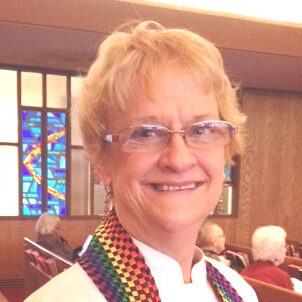How Can a Narrative Budget Help Us?
Rewritten from a website piece for the California-Nevada Conference of The United Methodist Church
Budgets aren’t sexy, but they’re necessary. If you’re a church leader, you’re probably thinking about it these days, as you start putting together your programs for the year ahead.
A line item budget is a financial form that reports income and expenses line by line, so the committees in a church or other organization can monitor their activities internally, making sure they don’t spend more than they have with which to work throughout the year. It is absolutely essential for any organization, for accountability and for donors to know to what causes their gifts are going.
But face it: a line item budget is not sexy.
It’s not motivating or inspiring, even to those few who can read and understand financial figures. It does not describe a church’s mission, performance, or desired outcome. It describes the how of local church finances – not the all-important why.
On the other hand, a narrative budget explains the why of the ministries we support financially and otherwise. It answers the question, “So what?” It clusters the cost of ministries, buildings, and personnel in a way that both church members and visitors can understand what all the money, time, and effort are for – in plain language, not in numbers.
So why is that motivating? Because with it people can creatively clump the church’s work into three to five dimensions. (No more. Keep it simple.) They might divide it by aspects of the congregation’s mission statement, by types of ministry, by core values, or by ministry goals. For example, one church used Meet God / Mature in Faith / Mobilize to Mission. Another one decided on Open Hearts / Open Hands / Open Minds. A third one picked Worship and Spiritual Growth / Fellowship and Membership Care / Local Community Outreach / Our Wider Connection.
Under each dimension, a series of bullet points or a few sentences describe current and projected ministries that members’ involvement and financial support will make possible. On the sheet next to each broad category, one money amount indicates the cost of this priority as a whole. It gives the reader an overall sense of what is needed to operate the program.
If you decide to draft a narrative budget for your congregation, one thing is key: staff members are not “overhead.” (Believe me, as a pastor I did not appreciate being classified like that.) Their time, energy and abilities are part of what accomplishes the mission. Likewise, the buildings and grounds are not overhead, either. Events that take place in your facilities are for a purpose, which hopefully relates directly to your congregation’s mission. If not, don’t do it.
So a narrative budget divides the cost of salary and pensions for any staff according to the percentage of time they spend in each of the overarching categories. You can ask your pastor to do a two-week or one-month time study to give you a ballpark percentage of where his or her time is spent.
The same goes for the facilities. Divide the total cost by the percentage of time they are used for each ministry dimension, from worship and internal congregational events to community groups’ use. Many churches also identify the portion they give to their shared denominational ministries and other benevolences according to their narrative budget category.
Each congregation’s narrative budget will look different according to its unique personality and ministry priorities. That’s where it gets attractive and personal. The point is to communicate financial needs in a way that makes sense to the members of our distinctive congregation. It answers the Why and the So what? of our ministries in a way people can readily understand.
There’s another use for the narrative budget, as well. When your financial commitment program is finished, just drop the financial figures off the sheet, and you can use the same categories as a communication tool with members and visitors. It tells them what’s important about what you do, and it keeps each of your programs accountable to your purpose. It becomes a motivational tool for your work together in the year ahead.
Now that’s what I call sexy.
Your partner in faith,
Betsy Schwarzentraub
See also:
What Is a Narrative Budget, Ways to Share Your Narrative Budget


